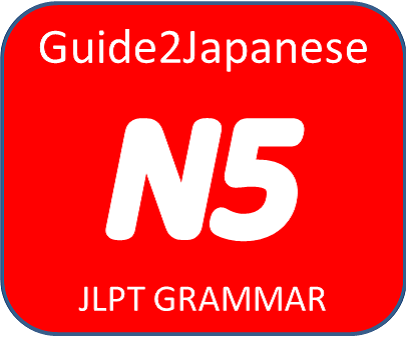JLPT N5 GRAMMAR: 普通形(futsuukei)
Japanese language has two style of speech: polite style (丁寧形)and plain style (普通形). Polite style is used in conversations between senior -Junior or first time conversation. While plain style is used in conversation between close friends and written works like newspapers, books etc.
| 丁寧形 (teineikei) Polite form | 普通形 (futsuukei) Plain form | 丁寧形 (teineikei) Polite form negation | 普通形 (futsuukei) Plain form negation |
| かきます かきました あります ありました | かく かいた ある あった | かきません かきませんでした ありません ありませんでした | かかない かかなかった ない* なかった* |
| 大きいです 大きかったです | 大きい 大きかった | 大きくないです 大きくなかったです | 大きくない 大きくなかった |
| 静かです 静かでした | 静かだ 静かだった | 静かじゃありません 静かじゃありませんでした | 静かじゃない 静かじゃなかった |
| 雨です 雨でした | 雨だ 雨だった | 雨じゃありません 雨じゃありませんでした | 雨じゃない 雨じゃなかった |
Example sentences:
| 丁寧形 | 普通形 |
| 明日東京へ行きます。 Ashita Tōkyō e ikimasu. I will go to Tokyo tomorrow. मैं कल टोक्यो जाऊंगा। | 明日東京へ行く。 Ashita Tōkyō e iku. I will go to Tokyo tomorrow. कल टोक्यो जाऊंगा। |
| 毎日忙しいです。 mainichi isogashiidesu. I am busy everyday. मैं हर दिन व्यस्त हूं | 毎日忙しい。 mainichi isogashiidesu. I am busy everyday. हर दिन व्यस्त हूं |
| 相撲が好きです。 Sumou ga sukidesu. I like sumo. मुझे सूमो पसंद है। | 相撲が好き。 Sumou ga suki. I like sumo. सूमो पसंद है। |
| 富士山に登りたいです。 Fujisan ni noboritaidesu. I want to climb Fuji Mountain. मैं माउंट फ़ूजी पर चढ़ना चाहता हूं। | 富士山に登りたい。 Fujisan ni noboritai. I want to climb Fuji Mountain. माउंट फ़ूजी पर चढ़ना चाहता हूं। |
| ドイツへ行ったことがありません。 Doitsu e itta koto ga arimasen. I have never been to Germany. मैं कभी जर्मनी नहीं गया। | ドイツへ行ったことがない。 Doitsu e itta koto ga nai. I have never been to Germany. कभी जर्मनी नहीं गया। |
Question in the plain style generally omit the particle か, which denotes a question, and end with a rising intonation.
- 「コーヒーを飲む?」「….うん、のむ。」・「…ううん、飲まない。」
- `Kōhī o nomu?’`…. Un, nomu.’ ‘…uun, nomanai.’
- ”Do you want a coffee?””Yes, I do.” “…No, I don’t.”
- “क्या तुम कॉफ़ी पीयोगे?” “…. हाँ, पिऊंगा।”/ “…नही पिऊंगा”
In noun and なー adjective question だ is omitted. While answering such questions, you can also omit だ or add some another particle.
- 「今晩暇?」「….うん、暇/暇だ/暇よ/暇だよ」・「…ううん暇じゃない。」
- `Konban hima?’`…. Un, hima/ himada/ hima yo/ himada yo’ `… Ūn hima janai.’
- ”Are you free tonight?” “Yes, I’m./ No I’m not”
- “क्या तुम आज रात खाली हो?” “…. हाँ, खाली हु / “… खाली नहीं हु।”
If the meaning of the sentence is evident from the context, certain particles are often omitted.
- ご飯(を)食べる?
- Gohan (o ) taberu?
- Will you take a meal?
- खाना खाओगे?
- 明日東京(へ)行かない?
- Ashita Tōkyō (e ) ikanai?
- Won’t you come to Kyoto tomorrow with me?
- तुम कल टोक्यो नही चलोगे?
- このりんご(は)おいしいね。
- Kono ringo (wa) oishī ne.
- This apple is tasty. Isn’t it?
- यह सेब स्वादिष्ट है ना।
- そこにはさみ(が)ある?
- Soko ni hasami (ga) aru.
- Is there pair of scissors there?
- वहां कैंची हैं क्या?
In the plain style, い of Vてー form いる is also often dropped.
- 「辞書、持って(い)る?」「….うん、持って(い)る」・「…ううん、持って(い)ない。」
- `Jisho, motte (i )ru?’`…. Un, motte (i )ru’`… ūn, motte (i ) nai.’
- “Do you have a dictionary?” “…Yes, I do.” /”…No, I donot.”
- “शब्दकोश है क्या?” “…. हाँ, मेरे पास है” – “… नहीं, मेरे पास नहीं है।”



